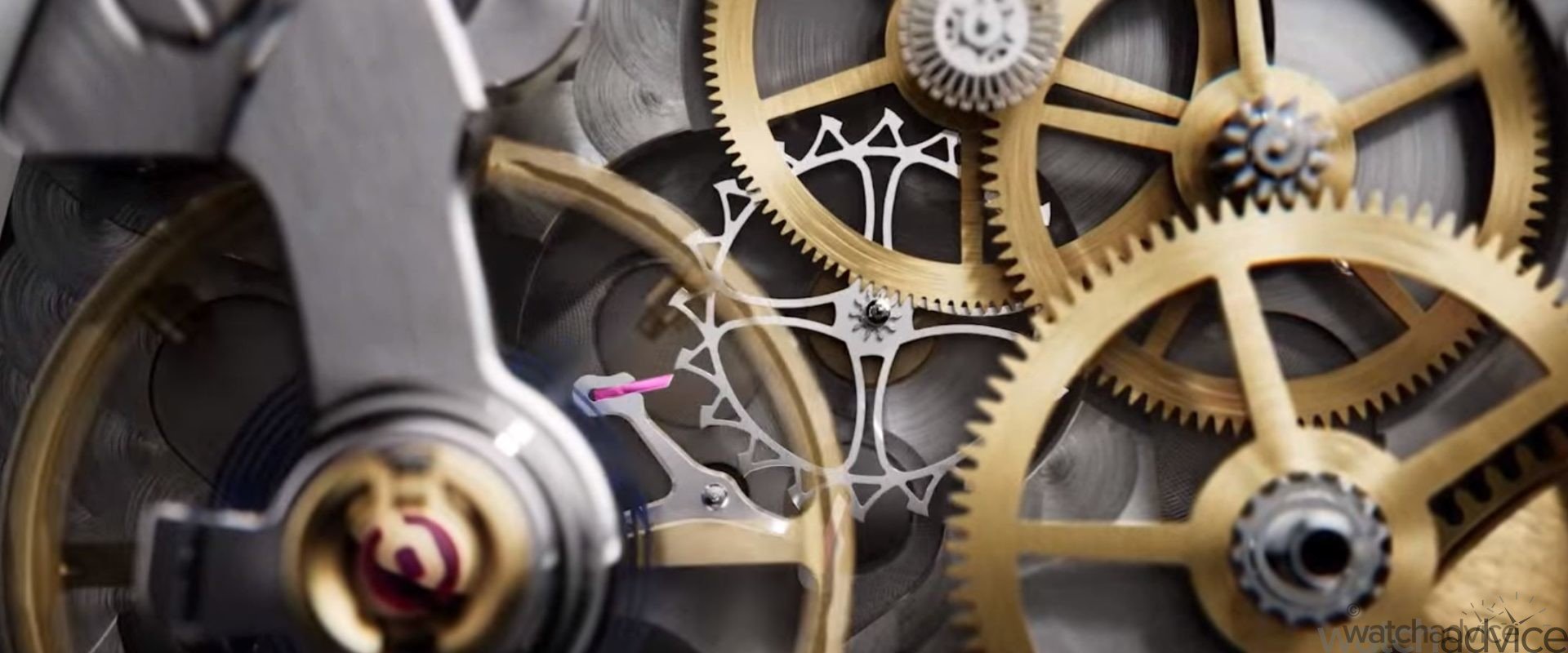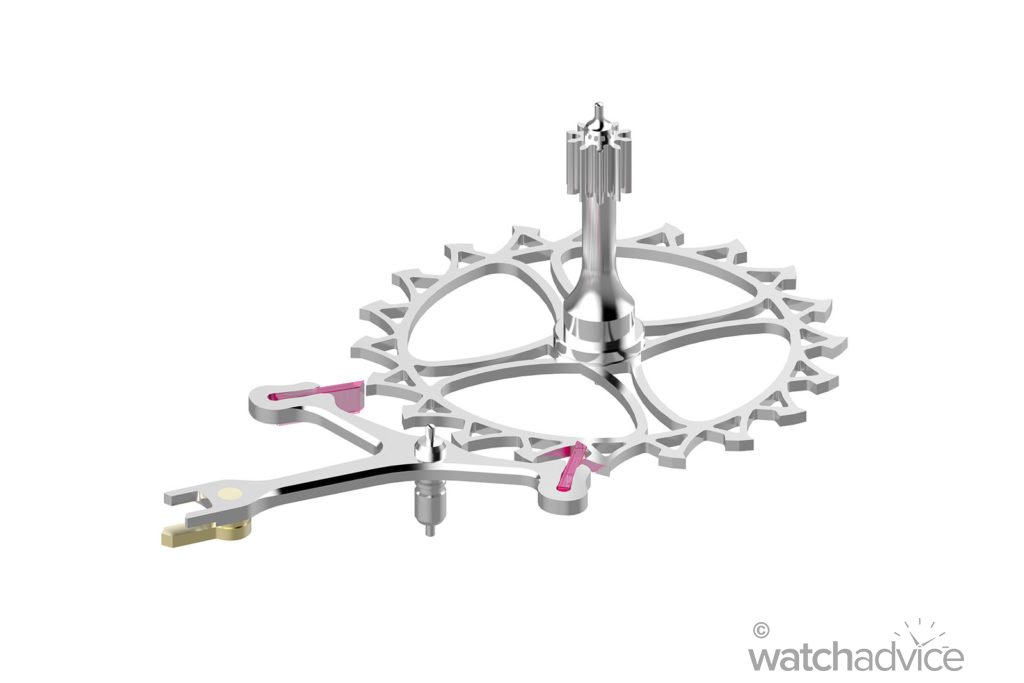Continuing on from our article “Introduction To The Watch Escapement, And Why It’s Vital In Watchmaking” this second piece outlines Rolex’s involvement in advancing the “Modern Watch Escapement”.
The first article, which can be found here, discusses the history of the watch escapement and its many different evolutions of designs that led to what is being used by mechanical watchmaking brands worldwide today. It also talks about why the escapement mechanism is such a vital part of the movement, and without it, the movement essentially becomes useless.
From that article, we know that the modern watch escapement for brands takes the form of a lever escapement design (created initially in the 18th Century). What this article aims to show is the different forms of design or design variations of the lever escapement that modern brands are using. While it’ll be almost impossible to cover all the different designs in one article, we will cover the brands that stand out for their design, or use of materials to improve the modern escapement mechanism in a series of articles.
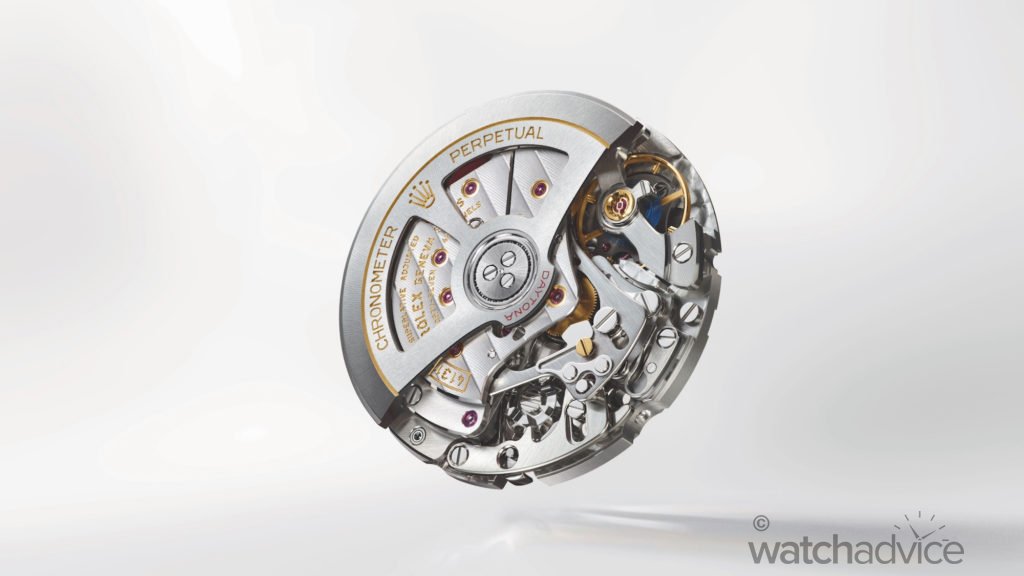
In this article, we will look at Rolex’s Chronergy escapement design. The next few articles giving insight into A.Lange & Sohne’s Constant-Force Escapement mechanism, and Ulysse Nardin’s Anchor Escapement design (so make sure to keep an eye out for those pieces!). Each brand has its own take on the escapement design, and as mentioned previously they take the initial base design from the lever escapement. The only brand out of the three mentioned above that uses a different system is Ulysse Nardin with their Anchor Escapement system.
Rolex Chronergy Escapement
A quick definition of the lever escapement before we dive into the modern re-interpretations. The lever escapement is a ‘detached’ escapement, where the balance wheel only comes into contact with the lever during the short period when it swings through its center position, after which it swings freely for the rest of the cycle. Impulse is provided to the balance via a lever which is moved through the force from the escape wheel teeth contacting the pallet jewels of the lever.
The “tick” sound you hear on most mechanical timepieces is when the tooth of the escape wheel locking against onto the pallets. Then the pallet fork lets the wheel escape (hence why it’s called escape wheel!) until it grabs or locks onto the next tooth on the escape wheel, thus producing the “tick-tock” sound of a watch. It found that the difference in time between the “tick” and “tock” of an escapement mechanism is approximately 1/8th of a second! This is also where watch frequency comes into play. When a timepiece has 28,800 VpH/frequency this means that there are 28,800 “ticks and tocks” per hour! In other words, the pallet fork locks, escapes, and locks again onto the escape wheel 28,800 times per hour.

The reason why the lever escapement has been used worldwide for mechanical watches is the fact that it has been proven to be robust, reliable as well as being easy to manufacture on a large scale. This does not mean that the lever escapement is the final “perfect design”. Improvements can most certainly be made, and companies with the resources and funding are able to do just that, and produce new designs that can be used for large-scale rollouts.
One company to do just that was Rolex. It was noted that one of the weaknesses of the standard lever escapement was that during high-frequency (Hi-beat 28,000 – 36,000 VpH) the transmission efficiency was greatly reduced to about 30-40% compared to normal frequency ranges of 18,000-21,000 VpH. One of the ways Rolex found to improve this efficiency was to change the design of the escape wheel and the pallet fork. The standard lever escapement comes with a “Club tooth” design, which is what Rolex focused on changing to bring about more efficiency to the lever escapement design.
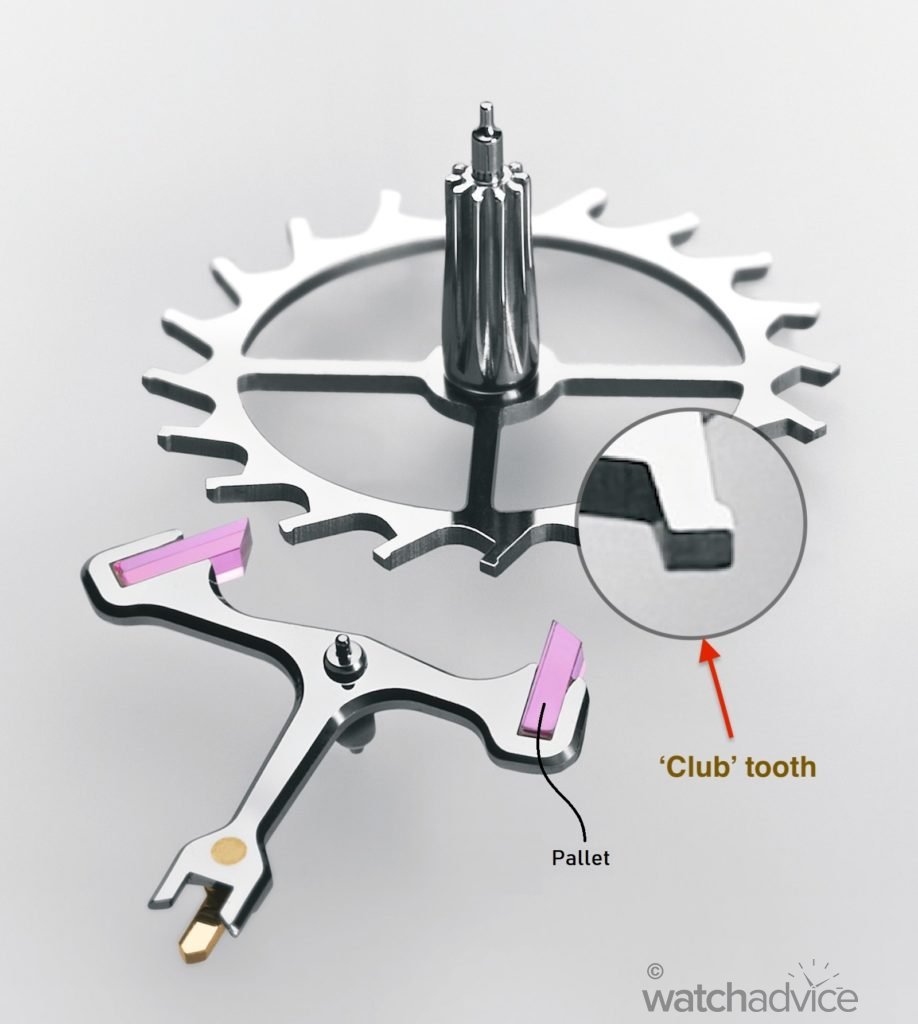
Rolex’s patented design uses thinner pallet forks along with wider teeth for the escape wheel. The lever bridge design has also been drastically changed, however, this is not related to the purpose of increasing efficiency but rather reducing space in the movement itself while still having the same functionality of the standard lever escapement. The escape wheel design of the Chronergy escapement has more of a skeletal design, where the tooth attached to the wheel has been hollowed out. This saves overall material use while also still providing strength as the tooth is braced effectively.
This cut-out design of the escape wheel also makes it lighter than the standard escape wheel design. This, in turn reduces its overall inertia. In regards to this new escapement design, Rolex states, “This optimized escapement, named Chronergy, is the result of extensive research that led to a new design of the pallet fork and escape wheel. These two redesigned components are made of nickel-phosphorus, an alloy that makes them resistant to magnetic interference. The escape wheel has a cut-out design to make it lighter and reduce its inertia. Thanks to this innovative geometry, the efficiency of the escapement, which continues to provide optimum reliability and resistance, is improved by 15%.”

Rolex’s new Chronergy escapement has been used in several of their movements so far, including the brand’s in-house new generation calibre 3235 and 3255 movements, which were presented in 2015. In 2018, Rolex also unveiled the 3285 calibre movement, which also includes the Chronergy escapement design. In 2023, Rolex released the calibre 4131 movement to replace the 4130 released back in 2000. Alongside the release of calibre 4131 in 2023 were the calibre 7140 movement and also calibre 9002 movement releases.
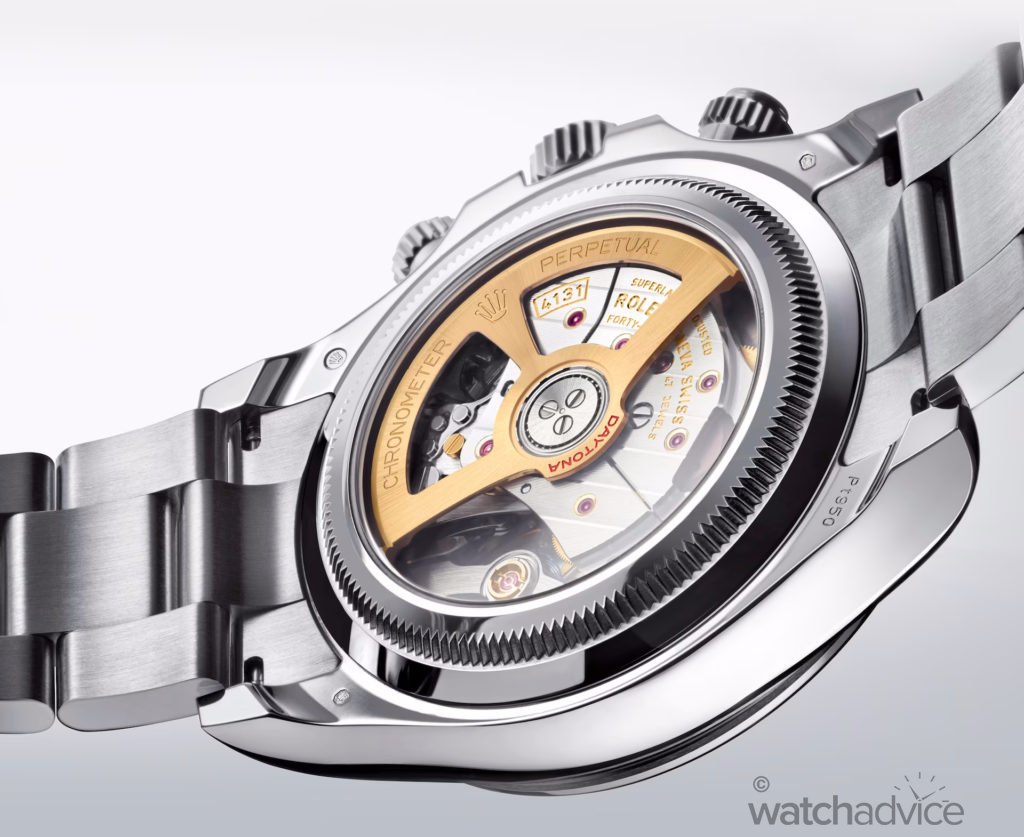
All three of these calibre releases for 2023 use Rolex’s patented Chronery escapement design, proving just how efficient and reliable this system is, while also providing an increase in power reserve from the standard Swiss lever escapement design. Through this article, its shown that the modern lever escapement design can certainly be improved to gain more efficiency in the system. Stay tuned as Watchadvice will do a series on the Modern Watch Escapement, with the next article in this education segment looking at Ulysse Nardin and their Anchor escapement!


